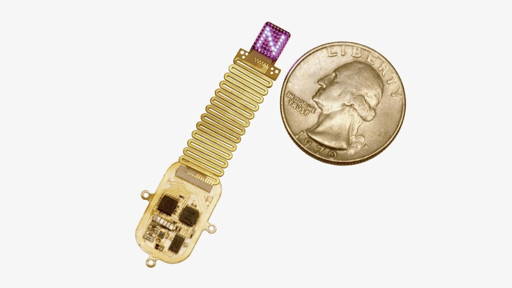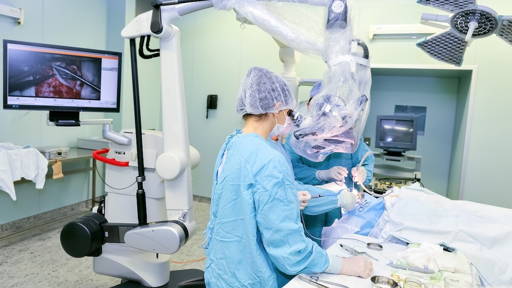This year, the Cleveland Clinic has overtaken longtime leader Mayo Clinic to take first place in Newsweek and Statista’s 'World’s Best Smart Hospitals' ranking. What pushed the Ohio-based institution to the top of global digital healthcare?
At the Cleveland Clinic, digitization is not just a tool; it’s embedded into the hospital’s core operations and culture. The facility is implementing existing technologies, such as artificial intelligence (AI), and is already exploring future solutions, including quantum computing. The focus, leaders say, is not simply on adopting tools, but on integrating them strategically.
“Implementing new AI tools without strategy and coordination across the organization is like trying to build a new wing of a hospital without a blueprint or permits,” said Paul Matsen, Chief Communications Officer at Cleveland Clinic.
Where digital transformation begins
Digital transformation begins with healthcare workers who understand what they need to deliver the best patient care. Equally critical is the emphasis on high-quality data for clinicians and improved planning of organizational processes. The institution carefully selects tools that support staff without adding administrative burdens.
Yet the Cleveland Clinic’s approach goes beyond implementing tested solutions. It aims to be a pioneer, investing in tomorrow's technologies. One example is the installation of IBM Quantum System One as part of a 10-year partnership, marking the world’s first quantum computer dedicated to medical research.
Additionally, the clinic has introduced AI to automate the creation of electronic medical records (EMRs), easing the documentation burden on physicians. During a six-month pilot program, 80% of the 300 par-ticipating doctors actively used the solution. Of those, 32 percent re-ported spending more time with patients, while 25 percent said they reduced the time needed to create EMRs. Among the AI algorithms al-ready in use is a predictive model for cardiovascular disease.
The hospital also employs multiple da Vinci surgical robots and digital imaging diagnostics. Telemedicine services are now standard, both for routine care and for providing second opinions. Cleveland Clinic oper-ates not only in the United States but also in London and Abu Dhabi.
Automation wherever possible
Decisions regarding the implementation of digital health solutions are not made solely by central administration. Instead, they are handled by teams of IT experts and healthcare professionals. The goal is to ensure that the systems, features, and applications adopted are tailored pre-cisely to clinical needs. Many solutions are developed collaboratively with IT vendors.
One such innovation is the central electronic patient monitoring tool at the Bariatric and Metabolic Institute. Previously, doctors had to manu-ally track patients’ test results to determine their eligibility for surgery.
A similar tool was developed for the electronic medical record system. It uses intelligent data scanning to monitor key stages of treatment, re-ducing the time required to coordinate care. As a result, the facility has been able to increase the number of procedures performed.
Cooperation in digital innovation is essential, both internally and ex-ternally. Cleveland Clinic is committed to the responsible and ethical use of technology. It is a founding member of several international AI initiatives, including the AI Alliance (a project of IBM and Meta), the AI Safety Institute Consortium at the U.S. Department of Commerce, and the Coalition for Health AI. This involvement means the clinic isn’t simply waiting for AI guidelines to emerge – it is shaping them.
Technology-supported, not technology-dominated care
Another guiding principle is what the institution refers to as “digital minimalism.” Rather than radically overhauling existing systems or constantly purchasing new ones, the hospital seeks to maximize the potential of its current infrastructure, especially its EMR system. This approach enables faster project implementation, lower training re-quirements, and lower costs.
Since hospitals often utilize only a fraction of the capabilities built into their IT systems, the Cleveland Clinic emphasizes the importance of fully exploring existing tools before acquiring new ones.
Another component of its digital transformation is the development of tools for patients, ensuring continued access to care after they leave the hospital. These innovations include “ambient AI” (artificial intelligence that gathers health data via in-room sensors), AI-powered triage in emergency departments, and real-time clinical decision support sys-tems.
In parallel with its top spot on the list of leading ‘smart’ hospitals, the Cleveland Clinic also secured second place in Newsweek’s overall ranking of the best hospitals worldwide.
Only one European hospital in the Top Ten
Among the world’s top 10 smart hospitals, only one is based in Europe: Charité – Universitätsmedizin Berlin, ranked eighth by Newsweek and Statista.
Charité stands out for its ambitious digital strategy, which includes reaching HIMSS EMRAM Level 7 by 2028 (now it’s 5.6). To achieve this, the hospital is working toward the complete structured digitization of all medical records, along with the development of a unified data platform. The goal is to ensure that high-quality, structured clinical data can be used effectively with algorithms and AI-based tools.
The hospital is also expanding its telemedicine services and digital pa-tient portal, aiming to deliver up to 50% of treatments remotely by 2030, which is a goal set in Charité's "Digital Strategy 2030". It is integrating smartwatch data for patient monitoring and collaborating with interna-tional partners, including Intel, to develop AI tools that support clinical workflows.
Beyond individual facilities, Charité advocates for the regional integra-tion of hospital information systems, following models seen in Finland, Canada, and Australia. To support this, it has significantly increased its digital health investment, raising IT spending from Germany’s typical 1–2% of hospital budgets closer to the international standard of 4%.









